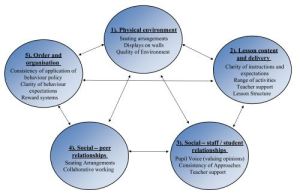Trends in Adult Education in my field
I’m in the technology industry, working for a software development company, QHR Technologies Inc.
One of QHR’s product offerings is an application geared to the healthcare industry. It’s a deep, complex application that covers everything from recruiting, HR, scheduling, and payroll.
The product is a client-side, server-side application that demands a high level of technical (Network and server architecture) skills from our client’s IT department to manage and maintain the system. Additionally, the end-users also require a broad understanding of the application to successfully use the system to perform their day-to-day tasks.
It’s because of the depth of the application itself and the technical aspects to maintain the system, that there are few people that understand how to use the complete system, even within our own organization. This requires constant learning among our various departments, particularly when a new version is released. The Technical Writing department must learn what the new features are and how to use them in order to be able to update the documentation, the Support department must also understand all of the changes so they can properly support our clients, etc.
Although it’s important for our own organization to stay abreast of changes, it’s equally important (or more so) that we keep our clients educated about our product and its usage. If our clients don’t know how to use our product, we’d quickly lose our client-base.
In previous years, the majority of our training was performed on-site. QHR has a team of consultants that travel to the client site, offering training in specific modules in a classroom-style environment. This style of training has many limitations.
- This is the most expensive training available to our clients. They must pay for the trainer’s flight and hotel, daily travel to-and-from the hotel to the client’s site, and the cost of presenting the course itself. This can easily add up to thousands of dollars per course.
- There is a limited number of trainers, therefore there is a limited number of course times available. A trainer can only offer courses a limited number of times per year and those times must be spread out to try and accommodate as many client organizations as possible. This makes it challenging for the client to arrange to have numerous learners available at the same time.
- The same limitation exists for the different courses available. Since our application is so vast, training must be broken-up into various sections. A trainer cannot encompass all of the application modules into one training session. Therefore, the same challenge occurs; a trainer can only be in so many places throughout the year and can only offer so many different courses per year. For organizations to try and get complete coverage of the courses is virtually impossible; cost notwithstanding.
- When a client has staff turnover, training the replacement staff is limited to the existing, or out-going, staff to train the replacement person(s). Alternatively, the client must await the next round of training courses offered by us, the vendor. Again, availability of the trainer, availability of the course, or courses, needed by the new staff, and cost all become factors of efficient, effective staff turn-over.
In recent years, with faster Internet availability and a better selection of available tools, we can now more easily create and offer training videos that are quick and easy to download or stream across the Internet. This style of training offers many benefits:
- We are able to offer clients low cost access to training videos. A client no longer needs to pay for expensive travel or accommodation.
- The videos are accessible 24/7 so clients no longer have to work around the QHR trainer’s schedule, nor try to arrange a convenient time for multiple students to all get together for a class. Each student can access the desired training module at their own convenience.
- QHR can host training videos for all modules of our application, so clients can learn what they want, when they want.
- Once a video is created, it exists for any client or QHR staff at anytime, anywhere. A trainer doesn’t need to keep going to client sites training the same thing over-and-over.
- New staff can easily access training videos without relying on other staff to train them.
QHR’s most recent training availability is a personal instructor again, but instead of the trainer traveling to the client site, the course is offered via a remote connection from the client site to our local office. This too, offers benefits to both our own organization and to our clients.
- We are able to offer our clients personalized training at a reasonable cost. Again, the client no longer has to pay for expensive travel accommodation costs.
- The training is tailored to the client’s needs. Our application is user-configurable, so no two client environments are the same. Additionally, each client tends to use the application in different ways. A video must be general training that covers the application and how to use/configure it in a very generic manner. Remote training allows the trainer to teach the client how to configure and use the application specific to the client’s own environment.
- QHR can offer personalized training in a more efficient manner. We can be more responsive to the client’s availability. Since a single four hour course can be offered twice per day (without long travel times between client sites), we can train multiple clients per day, if need be. Additionally, with remote access, we don’t need to limit a course offering to a single client at a time; we can connect multiple clients to the same training session.
In a few short years, ever-improving technology has allowed more effective, efficient training to clients that wasn’t available or efficient in the recent past. Technology has allowed us to be more responsive to client needs at a fraction of the cost.





Recent Comments